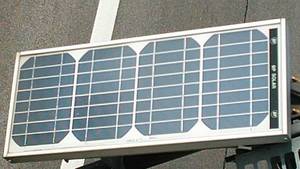World's smallest solar panel, or should that be wire?
US scientists have taken solar cell technology a step further with the development of the solar nanowire - a solar device 200 times smaller than a human hair.
Charles Lieber and his team at Harvard in the US have found a way to deposit the three semi-conductor layers needed to make a solar cell in concentric circles. The innermost layer consists of silicon containing a small amount of boron, which makes it eager to give up electrons. A thin insulating "shell" of plain silicon is then deposited around the inner core, and an outer layer of silicon "doped" with electron-hungry phosphorus is added around the outside.
 When light hits the wire it knocks electrons off the boron and into the phosphorus-containing outer shell. They then flow around a circuit to return to their starting point. Under normal sunlight each wire pumps out about 50-200 picoWatts (less than a billionth of a watt), and they are only about 3% efficient, but the team are aiming for 15% efficiency and have already demostrated that with light 8 times the intensity of sunlight they can power a nano-sized pH meter.
When light hits the wire it knocks electrons off the boron and into the phosphorus-containing outer shell. They then flow around a circuit to return to their starting point. Under normal sunlight each wire pumps out about 50-200 picoWatts (less than a billionth of a watt), and they are only about 3% efficient, but the team are aiming for 15% efficiency and have already demostrated that with light 8 times the intensity of sunlight they can power a nano-sized pH meter.
"This enables us to study a fundamentally different geometry for photovoltaic cells," says Lieber.




Comments
Add a comment